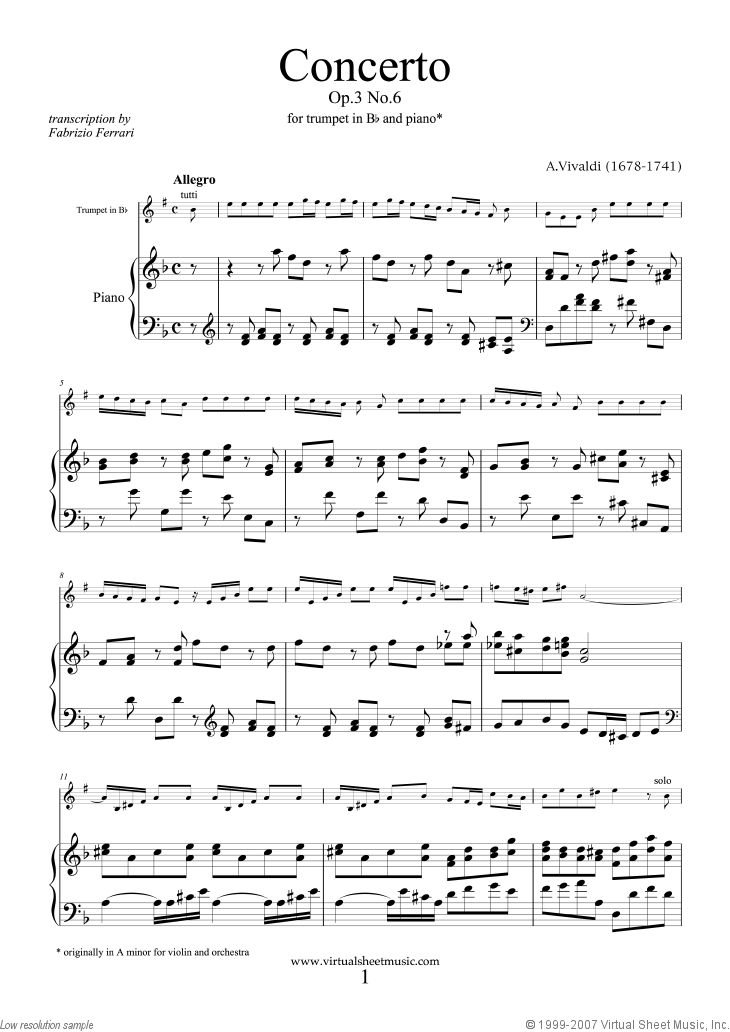

Heri Williams in “Vivaldi-A Music Primer”, states that the Allegro is the most inventive of the component movements of this work It begins with an up accent note played on the open string technique of violin command(also known as bowing action). These translations are bland and do not suffice to represent the robust musicality of all the concertos in the program(38). The major title’s translation cannot find its meaningfulness in exact words some attempts at translation have been: “The Harmonic Fancy” and “The Musical Flush”. is only one of twelve concertos in the compilation of works entitled L’Estro Armonico.

Violin in Orchestra in A minor, Op.3, No.6. Teresa, as cited by Dong Demi Wei-Lee in her Asian “Music Across Ages, Music Everyone Loves”, this ritornello method as a form of musical composition alternates(24)usage of solo for performance instrument(s) sections with repeated musical stanzas which aim to make the potent dynamism which comes with the orchestral portrayal of the language of music a quality of musical composition and organization, easily found but always starkly felt. And so, since his music would almost always be akin to forms of creative storytelling, Vivaldi is said to be one of the forerunners of program music(61).The First Part of the Programme: Reading Musical LanguageAntonio Vivaldi’s Violin in Orchestra in A minor, Op.3, No.Ħ., utilizes the ritornello form in its structuring. This composer would often use the ordinary events of life in this world to act as his artistic influences. These aforementioned factors may (of course) be attributed to how the composer, Antonio Vivaldi, had a penchant for infusing his distinct musical linguistics with dramatic inventiveness and ingenuity (86). Pietra Salcedo in “ Antonio Vivaldi: La Historia de un Canziones por la bailar y vida!” explains to music majors, and music lovers, that much of the poetic imagery that audiences gather from experiencing the sublime and lyrical musical qualities of this work of Vivaldi, are explained by the directions in the sheet music that touch on the sound dynamics of the piece and the tempo directions as well. In Robertson Gregor’s “World Music and Their Historical Backgrounds”, it was presented that this particular concerto, is composed of three major parts: the Allegro, Largo, and the Presto. (1726) was born in Venice, although he had spent a great many number of years in Vienna during the span of his lifetime, up until the time of his passing from this lifetime in order to approach the next. 6.: A Musical AnalysisAntonio Vivaldi, who composed the Concerto for Violin and Orchestra in A minor, Op.3, No.6.


 0 kommentar(er)
0 kommentar(er)
